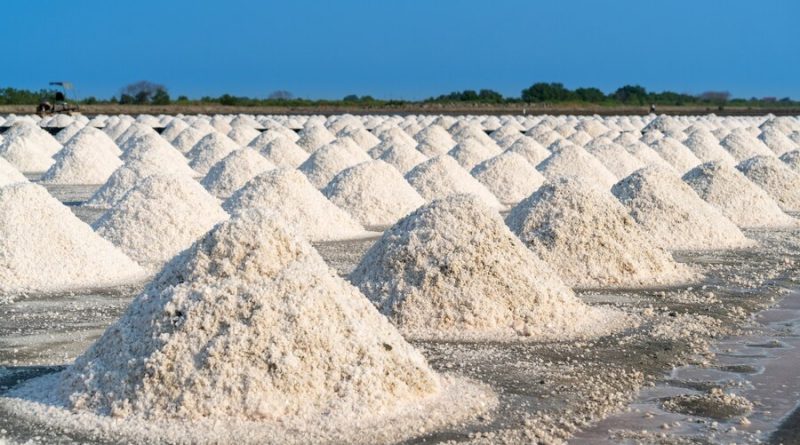Building Stronger, Smarter Composites: HPMA and Fumed Silica
In the ever-evolving world of composite materials, the quest for enhanced performance and functionality drives constant innovation. Two key players in this realm of 2-Hydroxypropyl Methacrylate supplier (HPMA) and FUMED SILICA suppliers. While seemingly distinct, when combined strategically, they unlock a synergy that elevates the properties of composite materials, making them stronger, lighter, and more versatile. This guest post delves into the unique characteristics of HPMA and Fumed Silica and explores the exciting possibilities that arise from their strategic combination in bulk quantities.
2-Hydroxypropyl Methacrylate (HPMA)
HPMA, also known as Hydroxypropyl Methacrylate, is a versatile monomer used in various applications, including:
- Polymer Synthesis: As a key component in the production of various polymers, HPMA offers valuable properties like:
- Improved water solubility: Enhancing the compatibility of polymers with aqueous environments.
- Enhanced biocompatibility: Making HPMA-based polymers suitable for biomedical applications.
- Increased adhesion: Promoting better bonding between the polymer matrix and other components within a composite.
- Coating Applications: HPMA finds use in coatings due to its ability to:
- Improve flexibility: Contributing to coatings that are less prone to cracking and peeling.
- Enhance durability: Offering increased resistance to wear and tear.
- Hydrophilic Nature: HPMA exhibits water-loving properties, making it ideal for applications requiring compatibility with aqueous environments.
- Excellent Biocompatibility: Its biocompatible nature makes it well-suited for medical and biological applications where minimal interaction with living tissues is crucial.
- Enhanced Mechanical Strength: HPMA contributes to the overall mechanical strength of the composite material, making it more resistant to stress and deformation.
- Improved Bonding: It promotes strong bonding between the polymer matrix and other components within the composite, enhancing its overall cohesion.
Fumed Silica: The Power of Nano
Fumed Silica, also known as pyrogenic silica, is a form of silicon dioxide created through a high-temperature process. This results in extremely fine, nano-sized particles with a high surface area. Fumed Silica offers a range of beneficial properties for composites such as:
- Reinforcement: The high surface area of Fumed Silica particles allows for strong interaction with the polymer matrix, leading to improved mechanical strength and rigidity.
- Improved Thermal Properties: Fumed Silica can enhance the thermal stability of composites, making them more resistant to high temperatures.
- Flame Retardancy: Certain types of Fumed Silica can impart flame-retardant properties to composites, offering an additional layer of safety.
- High Surface Area: Fumed Silica boasts a vast surface area, providing numerous sites for interaction with the polymer matrix, leading to improved reinforcement and mechanical properties.
- Enhanced Viscosity: Its presence increases the viscosity of the polymer mixture, facilitating proper distribution of particles and creating a more uniform composite structure.
- Tailorable Properties: The size and surface chemistry of Fumed Silica can be modified, allowing for precise control over the final properties of the composite material.
The Synergy of HPMA and Fumed Silica
When HPMA and Fumed Silica are combined in composite formulations, particularly for bulk quantity applications, they create a synergistic effect that elevates the overall performance:
- Enhanced Dispersion: HPMA acts as a dispersing agent for Fumed Silica nanoparticles within the polymer matrix. This ensures even distribution and maximizes the reinforcing effect of the silica particles.
- Improved Bonding: The hydroxyl group present in HPMA can form hydrogen bonds with the surface of Fumed Silica particles. This strengthens the interfacial bonding between the silica and the polymer matrix, leading to a more robust composite.
- Tailored Properties: By adjusting the ratio of HPMA and Fumed Silica, manufacturers can tailor the properties of the composite to suit specific applications in bulk quantities. For instance, increasing the Fumed Silica content can enhance strength, while a higher HPMA ratio might improve flexibility.
- Construction: Composites utilizing this combination can be lighter while maintaining superior strength, ideal for building materials and infrastructure projects.
- Automotive: Parts manufactured with HPMA and Fumed Silica composites can be lighter yet more durable, contributing to improved fuel efficiency and performance.
- Aerospace: The high strength-to-weight ratio achievable with this combination makes it valuable for aircraft components, optimizing performance and reducing fuel consumption.
- Medical Devices: HPMA’s biocompatibility and Fumed Silica’s reinforcement properties make them ideal for creating implants and medical devices with enhanced functionality and longevity.
Bulk Quantity Considerations
While HPMA and Fumed Silica offer numerous advantages, bulk quantity applications demand specific considerations:
- Cost-Effectiveness: Both HPMA and Fumed Silica require careful sourcing and processing for cost-effective bulk production. Manufacturers with experience in handling these materials at scale can offer competitive pricing for large quantities.
- Quality Control: Maintaining consistent quality in bulk production is crucial. Reputable suppliers with rigorous quality control procedures ensure consistent performance characteristics for each batch of material.
- Scalable Production: Bulk quantity applications require reliable production capabilities. Partnering with manufacturers with the infrastructure and expertise for large-scale production ensures timely delivery of your composite materials.
Conclusion
By harnessing the synergy between 2-Hydroxypropyl Methacrylate (HPMA) and Fumed Silica, manufacturers can create high-performance composites ideal for bulk quantity applications. From enhanced mechanical strength to improved thermal stability, these composites find use in diverse industries like construction, automotive, and aerospace. When sourcing materials for bulk applications, consider collaborating with reputable suppliers who prioritize cost-effectiveness, quality control, and scalable production, ensuring consistent and reliable composite materials for your large-scale projects. Read more!

